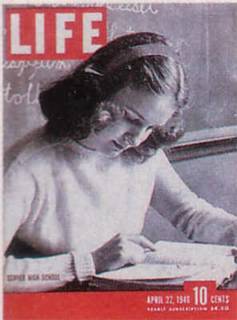
jazz studies
Charles Mingus, This Subdues My Passion.
Before Charles Mingus was Mingus the bebop all-star, or Mingus the Yahweh of the bass, or Mingus the subject of rock musician hagiography, he was a confused journeyman living in California.
Mingus spent much of the 1940s spinning around, trying to find a favorable direction. He excoriated bop, and then pledged allegiance to Charlie Parker; he belittled the upstart rhythm & blues, but incorporated R&B riffing into his compositions.
"This Subdues My Passion," recorded on May 6, 1946, was at last a solid step forward. It's one of Mingus's best early compositions, reflecting both his debt to Duke Ellington and Billy Strayhorn (stealing some ideas from "Chelsea Bridge") and indicating his own ability to meld a host of musical styles into one, from classical to Ellingtonian big band to the emerging jazz avant-garde. Ted Gioia: "Mingus managed to not only embrace a world of music, but engulf it in an overpowering bear hug."
Fifty years later, Elvis Costello wrote lyrics for this composition. I haven't heard them and don't really have the desire to.
"Subdues" is a bit hard to find these days--you could start here.
Boyd Raeburn, Body and Soul.
As jazz was shedding its role as the nation's primary means of dance music, some performers began trying to convert jazz into the music's PR motto by century's end: "America's classical music." Several musicians adopted Igor Stravinsky as a sort of jazz house composer, none more than Woody Herman, for whom Stravinsky wrote a composition, the "Ebony Concerto", while Herman performed "Igor" in return.
Boyd Raeburn had quite public ambitions of grandeur, calling his compositions "modern classical music applied to swing," dropping Hindemith and Shostakovich regularly into his conversations and even writing a composition called "Boyd Meets Stravinksy" (though I'm not sure the two ever did.)
The results were a bit mixed. Listen for yourself--here is the Raeburn band's take on the jazz standard "Body and Soul", in which a relatively straightforward adaptation of the song is bookended by Stravinskian imitations. It winds up being a weird but compelling muddle--a sort of forefather to 1950s space-age jazz.
Recorded in Los Angeles on June 6, 1946, with Raeburn's wife Ginnie Powell on vocals, and featuring alto, soprano, tenor and baritone sax players, as well as lots of trombone, french horn, flute, piano and harp. Phil Spector would have approved.
It can be found on Boyd Meets Stravinsky, a collection of 1945 and 1946 Raeburn band performances.
No comments:
Post a Comment